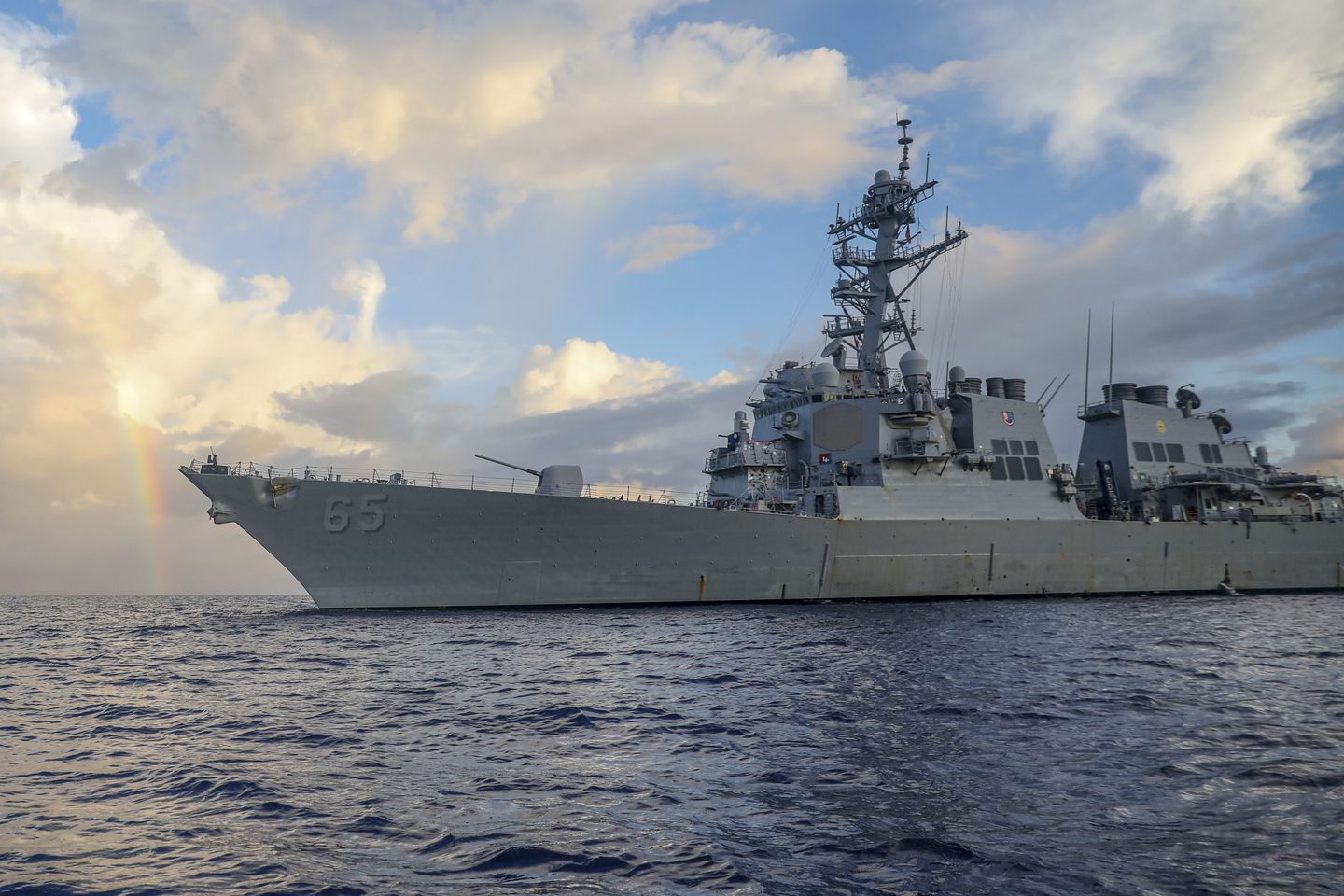

The Navy on Tuesday rolled out an updated long-term plan for transforming into a futuristic, high-tech hybrid fleet of more than 350 manned ships and submarines, some 150 large unmanned vessels, and about 3,000 aircraft to take on potential adversaries over the coming decades.
The rollout of Navigation Plan 2022 by officials at the Pentagon builds on existing blueprints for how to update and better equip the Navy‘s current fleet of about 400 — both large and small active and reserve — warships, cargo carriers and other assets.
The updated plan calls for a future fleet consisting of 12 Columbia-class ballistic missile submarines, 12 nuclear-powered aircraft carriers, 66 fast-attack submarines, some 150 smaller surface combatants like destroyers and frigates, about 50 amphibious assault warships, and roughly 200 auxiliary and logistics vessels.
It also outlines how the Navy plans to maintain, train and equip the country’s maritime force to contend with potential adversaries like China and Russia.
“It’s going to take us a couple of decades to get us to yield that hybrid fleet that we ultimately need,” Adm. Mike Gilday, Chief of Naval Operations, told reporters at the Pentagon. “I’m being realistic. We don’t have the capacity in the industrial base to pump out that number of ships in a short period of time.”
Even as Russian military forces continue their invasion of Ukraine, Adm. Gilday identified China as the nation’s primacy “pacing threat.”
SEE ALSO: Sen. James Inhofe wants DoD to find another location for African military exercise
Pentagon reports indicated that Beijing has leveraged its economic power over the past three decades to grow and modernize its military, including tripling the size of its navy. China has also expanded its strategic nuclear capacity and advanced its space and cyber capabilities.
Officials say China’s goal is to intimidate its neighbors, challenge free and open access to the seas, and hold U.S. forces at bay.
“We must move decisively to modernize U.S. naval power as we maintain readiness and a forward posture that keeps America and our allies safe and prosperous,” Adm. Gilday said on Tuesday.
Some lawmakers on Capitol Hill accused the Navy of not providing a consistent answer to the question of how many ships the service needs to deter or win a war.
“The fact that Congress has received four different answers from the Navy in the past three months alone sparks confusion and ultimately, less effective advocacy,” Rep. Mike Gallagher, Republican from Wisconsin, said this week in a statement. “The Constitution requires Congress to provide and maintain a Navy, and it is now clear that Congress must step in and help the Navy avert disaster before it is too late.”
Adm. Gilday said he would ultimately like to see shipyards turn out 2-3 guided missile destroyers every year, but said developing a strong fleet is not just a matter of quantity.
“The nation needs a ready, capable, and lethal fleet more than we need a bigger fleet that’s less capable, less ready, and less lethal,” he said.
Developing long-range precision firing capabilities is a priority for the U.S. military and the updated plans call for pushing forward with ship defense technology like directed energy laser weapons and high-powered microwaves.
Adm. Gilday, meanwhile, said the need to harden defenses took on extra significance after Ukraine’s successful attack against the Russian flagship Moskva in May. “The sinking of the Moskva has my attention in terms of terminal defense – defense of the fleet,” he said. “What happened in the Black Sea has informed my thinking.”
